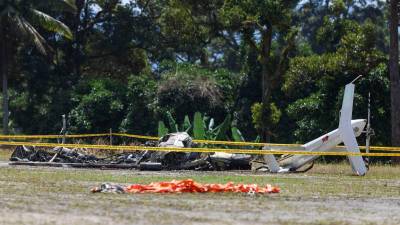KUALA LUMPUR: The preliminary investigation into the 6 February Bentong helicopter crash, which resulted in the death of a ground crew member, has identified multiple safety breaches during hot refuelling operations.
The Air Accident Investigation Bureau (AAIB) found both the Indonesian ground crew and the pilot of the Bell 206L4 helicopter violated established Safety Working Procedures (SWP).
Video evidence showed the helicopter, registered as PK-ZUV, undergoing hot refuelling without following mandatory safety protocols.
“Based on video footage of PK-ZUV conducting hot refuelling a day before the accident, it was observed that the crew from the Lessor did not adhere to the prescribed SWP,“ stated the AAIB report.
The report highlighted specific procedural failures, including the crew’s improper positioning during refuelling.
“Figure 5, Paragraph 1.4.1 (c), (e), and (f) clearly define the SWP for conducting hot refuelling.
However, as observed in Figure 6, the helicopter operator or the Lessor failed to adhere to these procedures,“ the report noted.
Hot refuelling, a process where fuel is added while the helicopter’s engine and rotor blades remain operational, is commonly used for time-sensitive missions.
However, strict safety measures must be followed, including using a fuel drum and manual pump, maintaining safe distances, and ensuring proper signalling between the pilot and ground crew.
The footage revealed critical lapses, including the helicopter hovering too close to the ground engineer, who was positioned directly beneath the rotor blades.
“The crew was already positioned beneath the helicopter while it was still hovering and approaching for landing, indicating a clear violation of this procedure,“ the report stated.
The crash occurred during a refuelling attempt near a hot spring pool in Kg Janda along the old Kuala Lumpur-Bentong road.
The ground crew member was fatally struck by the rotor blades, while the pilot sustained minor injuries.
The helicopter, leased for aerial work by Tenaga Nasional Berhad (TNB), lost control during hovering, partially struck the landing surface, and subsequently caught fire.
The AAIB also found that the lessor, PT Zaveryna Utama, failed to meet safety standards, while the lessee, MHS Aviation Berhad, neglected oversight responsibilities.
“The absence of a Safety Officer from the lessee to supervise the hot refuelling process contributed to crew complacency,“ the report added.
Investigators confirmed the helicopter was properly maintained and weather conditions were not a factor in the crash.
The final report is expected to provide further recommendations to prevent similar incidents. – Bernama
